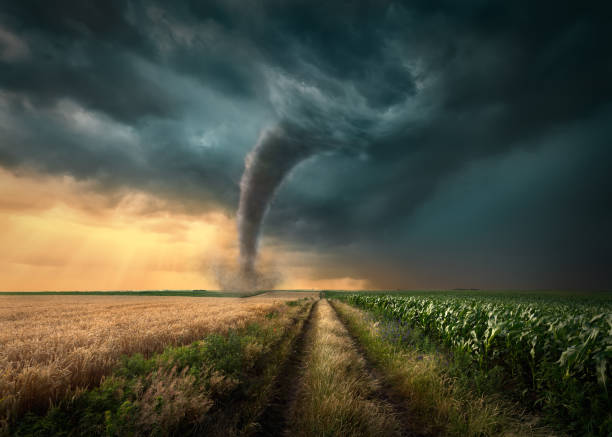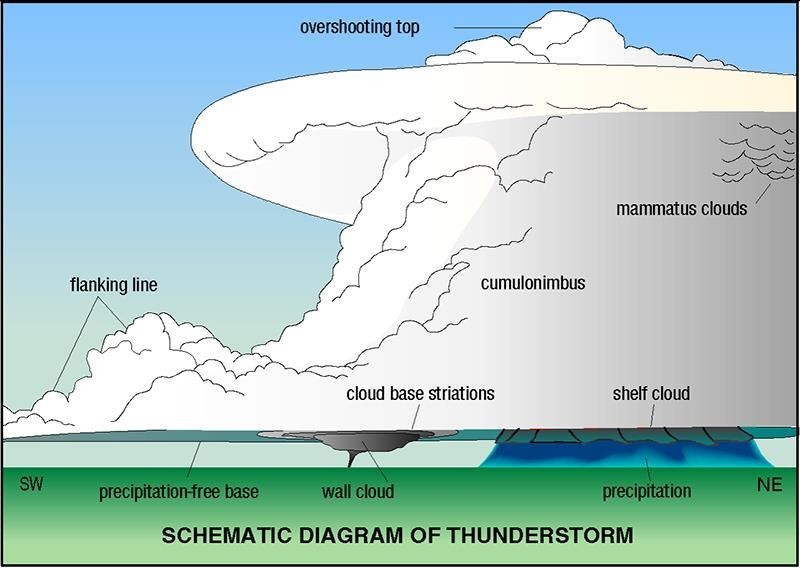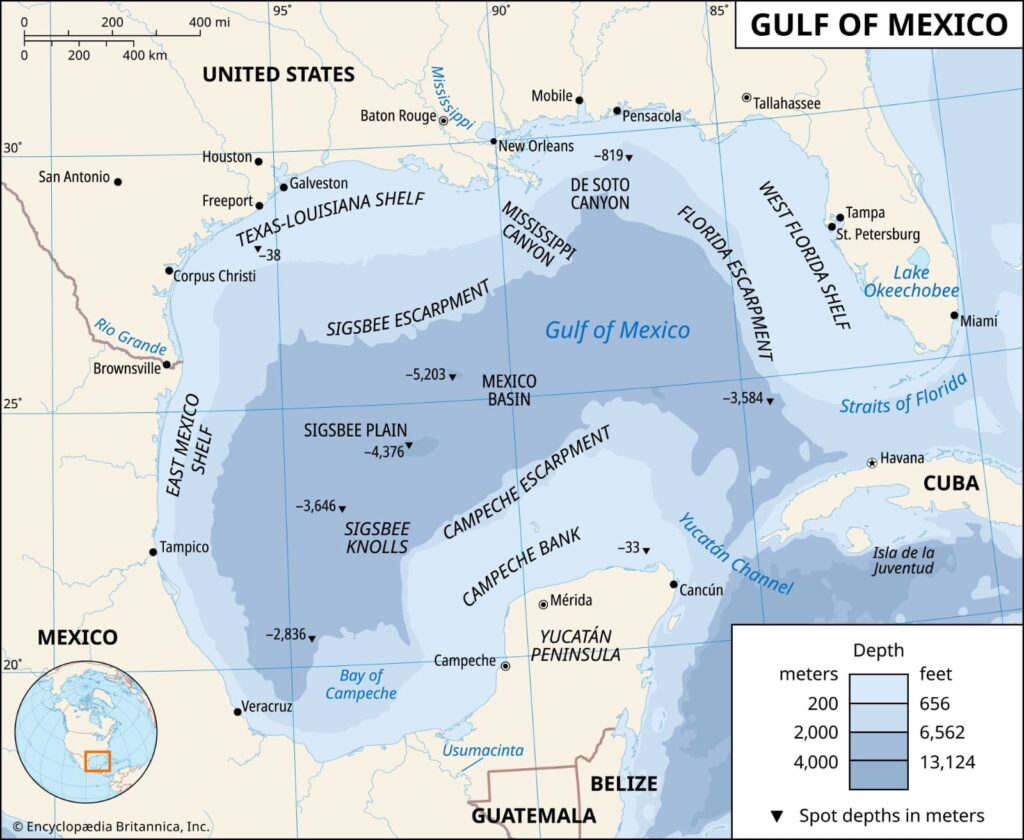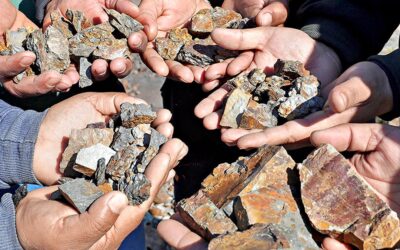What is a Twister?
A twister, more formally known as a tornado, is a rapidly rotating column of air that extends from the base of a thunderstorm down to the ground.
It is characterized by its funnel-shaped cloud, which is composed of condensed water vapor, dust, and debris picked up from the surface.
Tornadoes are among the most violent atmospheric phenomena, with wind speeds that can exceed 300 km/h in the most intense cases. When such a rotating column of air forms over water, it is called a waterspout.

Key Characteristics of Twisters
- Funnel-shaped cloud: Extends from the thunderstorm to the ground.
- Rotating winds: Wind speeds typically range from 100 to 300 km/h, but can be higher in extreme cases.
- Short duration and localized impact: Most tornadoes last from a few minutes to an hour and affect a narrow path, often just a few meters to several kilometers wide.
- Varied intensity: Tornadoes are classified on the Enhanced Fujita (EF) scale, from EF0 (weak) to EF5 (devastating), based on wind speed and damage caused.
- Associated with severe thunderstorms: Particularly with supercell thunderstorms, which are large, rotating storm systems

Formation Mechanism
The genesis of a twister involves several meteorological processes:
- Collision of Air Masses: Tornadoes typically form when warm, moist air (often from the Gulf of Mexico) collides with cold, dry air (from Canada or the Rocky Mountains), creating atmospheric instability.
- Thunderstorm Development: This instability leads to the formation of severe thunderstorms, especially supercells, which are characterized by strong updrafts and downdrafts.
- Wind Shear: A significant change in wind speed and direction with altitude (wind shear) causes the rising air within the storm to begin rotating horizontally.
- Mesocyclone Formation: Updrafts within the thunderstorm tilt the horizontally rotating air into a vertical orientation, forming a rotating column known as a mesocyclone.
- Tornado Formation: As the mesocyclone intensifies, a visible funnel cloud may develop. If this funnel cloud reaches the ground, it becomes a tornado or twister.
Why Are the Majority of Twisters Observed Around the Gulf of Mexico?
The region around the Gulf of Mexico, particularly the central United States (often referred to as “Tornado Alley”), experiences the highest frequency of tornadoes globally.
This is due to a unique combination of geographical and meteorological factors.

1. Proximity to Warm, Moist Air from the Gulf of Mexico
- The Gulf of Mexico acts as a vast reservoir of warm, moist air, which is a critical ingredient for the development of severe thunderstorms and tornadoes.
- This warm air is continuously supplied to the lower atmosphere, especially during spring and early summer, fueling atmospheric instability.
2. Clash of Contrasting Air Masses
- The region frequently experiences the convergence of warm, moist air from the Gulf with cold, dry air descending from Canada or the Rocky Mountains.
- This sharp temperature and humidity gradient creates the perfect conditions for the development of explosive thunderstorms, which can spawn tornadoes.
3. Flat Terrain and Geography
- The central United States, including areas around the Gulf of Mexico, is characterized by vast expanses of flat land (Great Plains and Mississippi River Valley).
- This flatness allows air masses to move and collide with little obstruction, facilitating the formation of large, long-lived thunderstorms and tornadoes.
4. Jet Stream Dynamics
- The jet stream, a high-altitude, fast-moving air current, often dips southward over this region during tornado season.
- This enhances wind shear (variation of wind speed and direction with altitude), which is crucial for the development of rotating thunderstorms (supercells) that can produce tornadoes.
5. Low-Pressure Systems and Storm Triggers
- The frequent development of low-pressure systems in this region, combined with the presence of dry lines and frontal boundaries, further increases the likelihood of severe thunderstorms.
- These systems act as lifting mechanisms, promoting the vertical movement of air necessary for thunderstorm and tornado formation.
6. Role of Hurricanes and Tropical Storms
- Tornadoes are a common hazard associated with hurricanes and tropical storms making landfall along the Gulf Coast.
- Studies show that 83% of hurricanes that made landfall along the Gulf of Mexico between 1950 and 2005 produced tornadoes.
7. Vegetation and Surface Heating
- The region’s grasslands and croplands can heat up quickly, creating pockets of rising warm air that further contribute to atmospheric instability.
- Moisture released by vegetation during hot days adds to the humidity, intensifying thunderstorms.
8. Climatological Uniqueness
- North America’s geography is unique: there are no major east-west mountain ranges to block the movement of air masses between the tropics and the Arctic.
- The Rocky Mountains, running north-south, instead force air masses to interact, which is a key reason why the U.S. sees more tornadoes than any other country.

Global Perspective
While tornadoes can occur in many parts of the world—including Germany, Australia, South Africa, China, Japan, Bangladesh, and Argentina—the United States, especially the region around the Gulf of Mexico, experiences the highest frequency due to the unique convergence of the above factors. The area known as “Tornado Alley” (Texas, Oklahoma, Kansas, and neighboring states) is particularly notorious for frequent and severe tornado outbreaks.
Implications for Disaster Management and Civil Services
Understanding the dynamics of tornado formation is vital for disaster preparedness, early warning systems, and mitigation strategies. The high frequency of tornadoes in the Gulf region necessitates robust infrastructure, community awareness, and rapid response mechanisms to minimize loss of life and property. Climate change is also influencing the frequency and intensity of tornadoes, making it imperative for policymakers to integrate climate resilience into regional planning and emergency management.
Conclusion
A twister, or tornado, is a violently rotating column of air extending from a thunderstorm to the ground, capable of causing immense destruction. The predominance of twisters around the Gulf of Mexico is due to a rare combination of warm, moist air from the Gulf, cold, dry air from the north, flat terrain, favorable jet stream patterns, and frequent triggering mechanisms such as low-pressure systems and hurricanes.
This unique confluence of factors makes the central United States, particularly the Gulf region, the most tornado-prone area in the world, underscoring the need for effective disaster management and climate adaptation strategies.




0 Comments